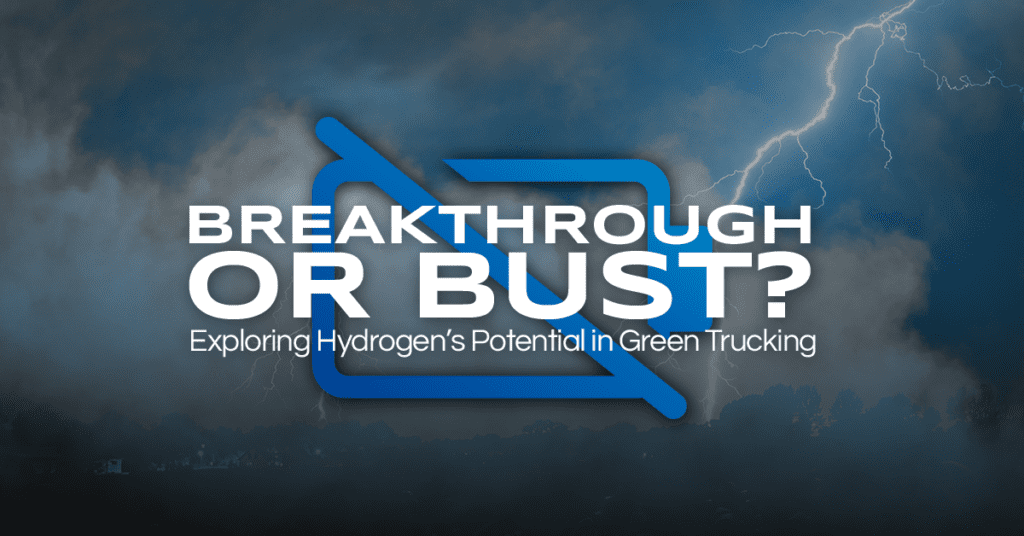
When it comes to green energy vehicles, it’s likely that batteries come to mind. However, for many of the heavier-duty tasks seen in industries like long-distance trucking, the current battery tech simply isn’t there yet. If you’ve been paying attention to recent headlines, you may have heard that green hydrogen has emerged and captured the limelight. Green hydrogen uses hydrogen fuel cells to produce electricity, an incredible resource as the only byproduct is water vapor
The Sky Is The Limit
Ultra Hydrogen, an innovative company in sustainable aviation, recently made headlines with its groundbreaking hydrogen-powered plane flight, marking a significant milestone in the quest for cleaner and more sustainable air travel. Universal Hydrogen, a company developing flight-ready fuel cells, completed taxi testing and received a special airworthiness certificate for their experimental De Havilland Canada Dash 8-300 test aircraft. This being the first successful hydrogen flight test, is even more impressive when you learn that the only output to the atmosphere was water vapor. This only begins to highlight just how incredible the advancements being made in harnessing hydrogen for eco-friendly transportation solutions across various sectors truly is.
Energy Crisis: Solved?
Sounds Great! The energy crisis is solved! Not so fast… According to a recent article, UK-based hydrogen expert David Cebon, co-founder of the Hydrogen Science Coalition, relying on green hydrogen for long-haul trucking is for all intents and purposes “completely wrong”. He emphasizes that hydrogen trucks are both costly and inefficient, requiring three times more energy to run compared to battery electric vehicles (BEVs). Cebon’s research shows that green hydrogen has an overall efficiency of just 23%, compared to 69% for a pure battery vehicle.
This isn’t as bad of news as it may seem, Cebon suggests that we should be reserving this groundbreaking tech for sectors where electrification is currently not possible, such as aviation or shipping. With the application of this technology being so new, the production and infrastructure still have a lot of room to grow. For the time being, the industry faces a sort of time-sensitive scarcity leading it to be much less practical to implement currently. Because of this, using green hydrogen for long-distance trucking would necessitate three times more land for wind or solar farms to generate the same energy return.
Powering Up: Down Under
In more vast areas of the world such as Australia, where long-distance trucking is essential for the transportation of many vital goods and resources, the current battery limitations pose a very significant challenge. As it stands, the largest heavy haulage vehicle battery in Australia is 1,400 kWh, which powers a 240-ton truck used on mine sites. This truck is designed for short-range, high-capacity hauls, but with the limitations on its power supply, it’s not suitable for long-haul trucking.
For Long-distance trucking in Australia, the process often involves B-Double trucks, which are built to cover distances of 500-750 miles without refueling. These trucks need an energy source that can provide the required range while maintaining efficiency and power. Unfortunately, the current battery technology has limitations in energy density and capacity, doesn’t make the cut when it comes to long-distance trucking applications.
Electric trucks with existing battery technology are mainly useful for shorter-range tasks, such as public transportation and at ports, applications where the trucks can be charged more frequently and travel shorter distances between charging points. These use cases can still benefit from reduced emissions as well as lower operating costs associated with electric vehicles.
Conclusion: Rethinking the Future of Long-Distance Trucking
All in all, The green hydrogen debate highlights the importance of evaluating the practicality and sustainability of different energy sources. While it may seem great to slap the latest tech into everything, there’s a lot more at play than it may seem. While experts like David Cebon present compelling arguments against hydrogen trucks, it’s critical to explore alternative solutions that will meet the demands of the trucking industry while maintaining environmental responsibility. As this new tech finds its footing across industries, it’s certainly not the last time we’ll be hearing about it and the future of its innovation is worth keeping your eyes on.
All in all, the green hydrogen discussion emphasizes the significance of assessing the practicality and environmental impact of various energy sources. While it might seem appealing to integrate the latest technology into everything, there’s a lot more to consider first. While future experts such continue to put forth persuasive reasons for and against hydrogen trucks, it only emphasizes the need to remain open to any and all options that can address the trucking industry’s needs without sacrificing our commitment to the environment. So, as green hydrogen technology makes its way into different sectors, we can be sure that this won’t be the last time we hear about it. It’s definitely worth keeping an eye on.
Before You Hit The Road…
If you made it to this part of the article, we’d just like to take a moment to thank you for taking the time to read it. Be safe out there and as always, If you’re in search of CDL A, B, or warehouse positions, check out our open positions. And if you need staffing solutions for commercial driving or industrial positions, be sure to explore our offerings.



